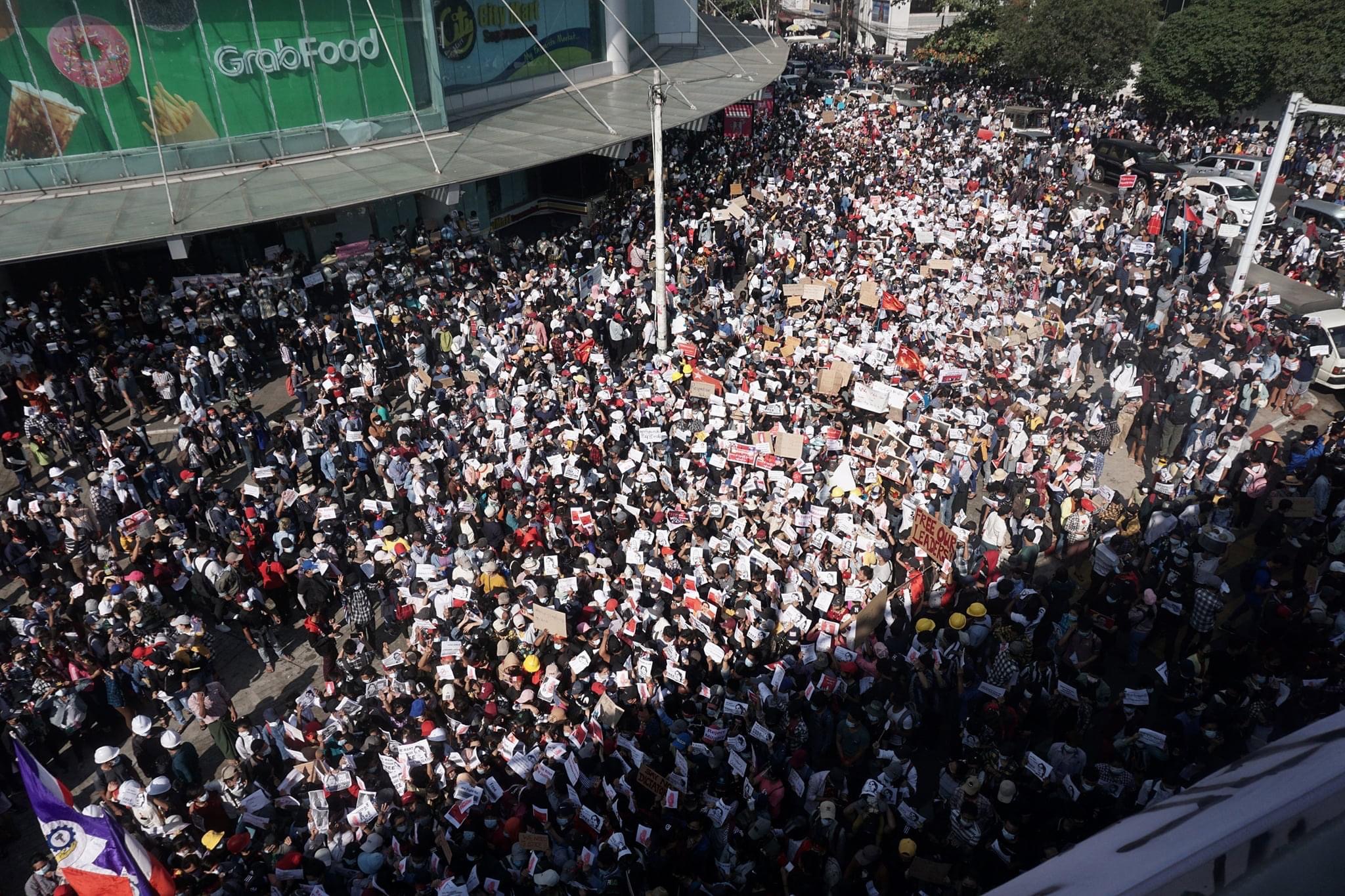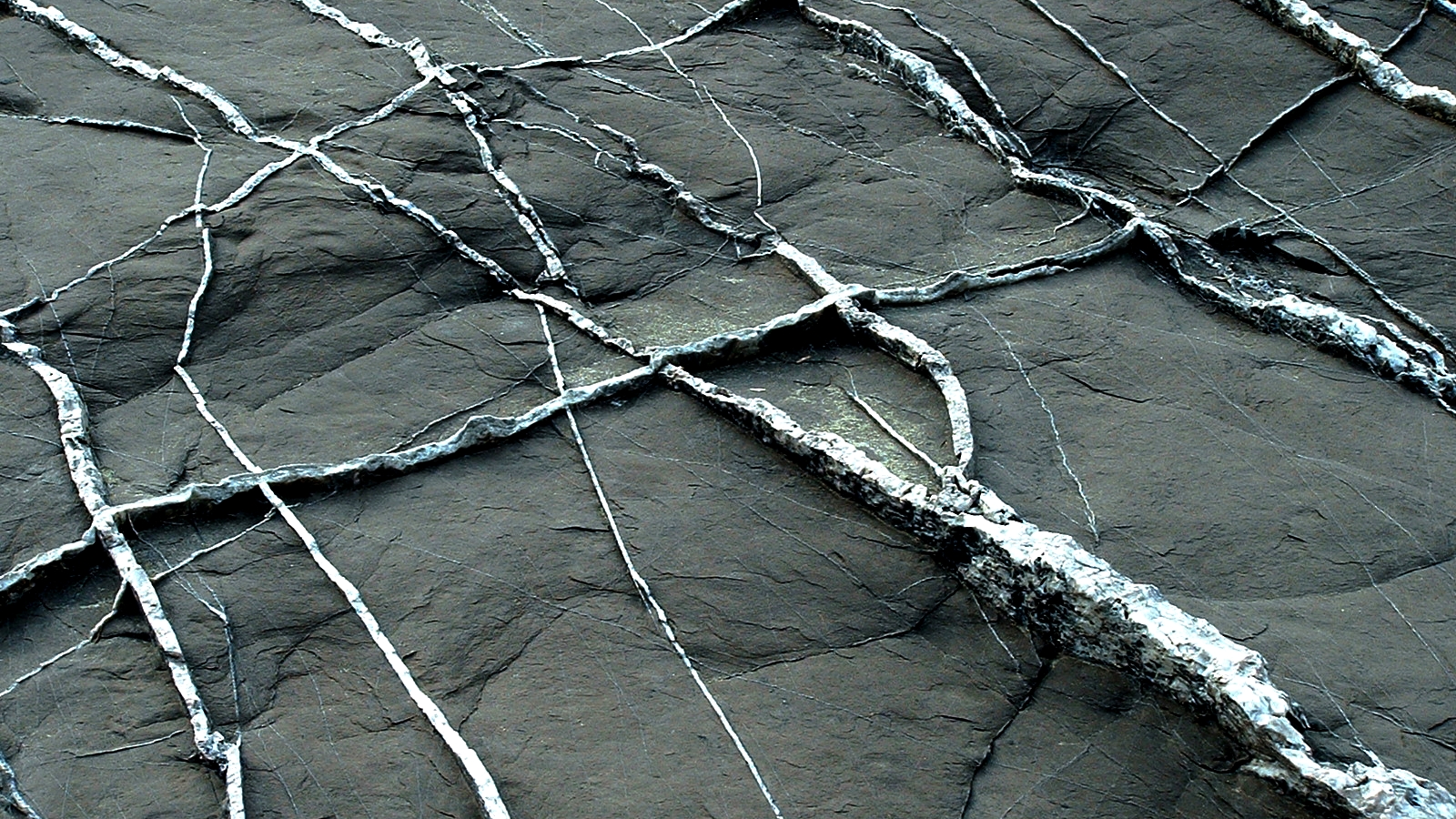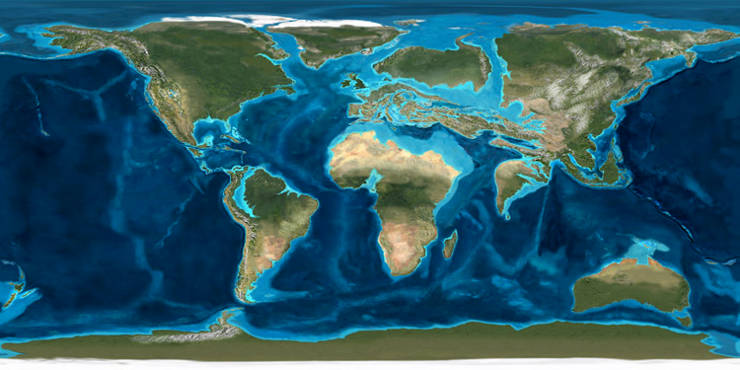|
Mawchi
Mawchi is a region in the Bawlake district of the Kayah State (formerly called Karenni State) of Myanmar. In the 1930s, the Mawchi Mine was the world's most important source of tungsten. Mawchi contained the world's largest granite-hosted tin-tungsten vein (geology), vein system before World War II. From 1930 to 1940, ore production amounted to 2,000 to 6,000 tonnes annually, which amounted to 60% of Myanmar's total production, and one-third of the world's tungsten. From 1980 to 2010, 25,000 tonnes of tin-tungsten ore were produced. Mawchi is located in the Western Granite Province, composed of Cretaceous to Eocene I-type granites and S-type granites, dominated by ilmenite-series rocks of granodioritic and syenogranite, syenogranitic composition. On January 28 in the Myanmar civil war (2021ŌĆōpresent), Myanmar Civil War, the town was seized by the Karenni Nationalities Defence Force, KNDF. References External links *ŌMaps, Weather, and Airports for Mawchi, Burma ĆØ Popul ... [...More Info...] [...Related Items...] OR: [Wikipedia] [Google] [Baidu] [Amazon] |
Myanmar Civil War (2021ŌĆōpresent)
The Myanmar civil war (Burmese language, Burmese: ßĆÖßĆ╝ßĆößĆ║ßĆÖßĆ¼ßĆĘßĆĢßĆ╝ßĆŖßĆ║ßĆÉßĆĮßĆäßĆ║ßĆĖßĆģßĆģßĆ║),, also known as the Burmese civil war, is an ongoing civil war since 2021. It began following Myanmar conflict, Myanmar's long-running insurgencies, which escalated significantly in response to the 2021 Myanmar coup d'├®tat, 2021 coup d'├®tat and the subsequent violent crackdown on Myanmar protests (2021ŌĆōpresent), anti-coup protests. The Government-in-exile, exiled National Unity Government of Myanmar, National Unity Government (NUG) and major list of ethnic armed organisations in Myanmar, ethnic armed organisations repudiated the 2008 Constitution of Myanmar, 2008 Constitution and called instead for a democratic Federalism in Myanmar, federal state. Besides engaging this alliance, the ruling government of the State Administration Council (SAC), also contends with other anti-SAC forces in areas under its control. The insurgents are apportioned into hundreds of armed g ... [...More Info...] [...Related Items...] OR: [Wikipedia] [Google] [Baidu] [Amazon] |
Kayah State
Kayah State (, ), or Karenni State, is a state of Myanmar. Situated in eastern Myanmar, it is bounded on the north by Shan State, on the east by Thailand's Mae Hong Son Province, and on the south and west by Kayin State. It lies approximately between 18┬░ 30ŌĆ▓ and 19┬░ 55ŌĆ▓ north latitude and between 96┬░ 50ŌĆ▓ and 97┬░ 50ŌĆ▓ east longitude. The area is . Its capital is Loikaw (also spelt Loi-kaw). The estimated population in the 2014 Myanmar Census was 286,738, the smallest among Myanmar's seven states. It is inhabited primarily by the Karenni ethnic group, also known as Red Karen or Kayah, a Sino-Tibetan people. Even though Kayah State is the smallest state in Myanmar, it is still larger than Yangon Region. Geography Karenni (Kayah) State is located in the eastern part of Myanmar. The relief of Karenni (Kayah) State is mountainous with the Dawna Range and the Karen Hills also known as "Karenni-Karen" mountains separated by the Salween River as it flows through Karenni ( ... [...More Info...] [...Related Items...] OR: [Wikipedia] [Google] [Baidu] [Amazon] |
Bawlake
Bawlakhe () is a town in the Kayah State of eastern part of Burma. History Bawlakhe was originally known as Bawlake. The British official, James George Scott, wrote that local inhabitants in the 1890s claimed that Poe Bya Hla had ruled as the fifth ruler of the Karenni State of Bawlake. Bawlake was most likely founded during the early wars of the Konbaung Dynasty, perhaps around 1760. Scott suggested it was founded before 1783. Bawlake then became the capital of Bawlake State, and after the independence of Burma Myanmar, officially the Republic of the Union of Myanmar; and also referred to as Burma (the official English name until 1989), is a country in northwest Southeast Asia. It is the largest country by area in Mainland Southeast Asia and ha ..., it was renamed Bawlakhe. References External linksSatellite map at Maplandia.comŌĆ£The Delineation of the Kayah States Frontiers with Thailand: 1809ŌĆō1894ŌĆØ by Ronald D. Renard ŌĆō Journal of Southeast Asian Stu ... [...More Info...] [...Related Items...] OR: [Wikipedia] [Google] [Baidu] [Amazon] |
Tungsten
Tungsten (also called wolfram) is a chemical element; it has symbol W and atomic number 74. It is a metal found naturally on Earth almost exclusively in compounds with other elements. It was identified as a distinct element in 1781 and first isolated as a metal in 1783. Its important ores include scheelite and wolframite, the latter lending the element its alternative name. The free element is remarkable for its robustness, especially the fact that it has the highest melting point of all known elements, melting at . It also has the highest boiling point, at . Its density is 19.254 g/cm3, comparable with that of uranium and gold, and much higher (about 1.7 times) than that of lead. Polycrystalline tungsten is an intrinsically brittle and hard material (under standard conditions, when uncombined), making it difficult to work into metal. However, pure single-crystalline tungsten is more ductile and can be cut with a hard-steel hacksaw. Tungsten occurs in many alloys ... [...More Info...] [...Related Items...] OR: [Wikipedia] [Google] [Baidu] [Amazon] |
Granite
Granite ( ) is a coarse-grained (phanerite, phaneritic) intrusive rock, intrusive igneous rock composed mostly of quartz, alkali feldspar, and plagioclase. It forms from magma with a high content of silica and alkali metal oxides that slowly cools and solidifies underground. It is common in the continental crust of Earth, where it is found in igneous intrusions. These range in size from dike (geology), dikes only a few centimeters across to batholiths exposed over hundreds of square kilometers. Granite is typical of a larger family of ''granitic rocks'', or ''granitoids'', that are composed mostly of coarse-grained quartz and feldspars in varying proportions. These rocks are classified by the relative percentages of quartz, alkali feldspar, and plagioclase (the QAPF diagram, QAPF classification), with true granite representing granitic rocks rich in quartz and alkali feldspar. Most granitic rocks also contain mica or amphibole minerals, though a few (known as leucogranites) conta ... [...More Info...] [...Related Items...] OR: [Wikipedia] [Google] [Baidu] [Amazon] |
Vein (geology)
In geology, a vein is a distinct sheetlike body of crystallized minerals within a rock. Veins form when mineral constituents carried by an aqueous solution within the rock mass are deposited through precipitation. The hydraulic flow involved is usually due to hydrothermal circulation. Veins are classically thought of as being planar fractures in rocks, with the crystal growth occurring normal to the walls of the cavity, and the crystal protruding into open space. This certainly is the method for the formation of some veins. However, it is rare in geology for significant open space to remain open in large volumes of rock, especially several kilometers below the surface. Thus, there are two main mechanisms considered likely for the formation of veins: ''open-space filling'' and ''crack-seal growth''. Open space filling Open space filling is the hallmark of epithermal vein systems, such as a stockwork, in greisens or in certain skarn environments. For open space fillin ... [...More Info...] [...Related Items...] OR: [Wikipedia] [Google] [Baidu] [Amazon] |
World War II
World War II or the Second World War (1 September 1939 ŌĆō 2 September 1945) was a World war, global conflict between two coalitions: the Allies of World War II, Allies and the Axis powers. World War II by country, Nearly all of the world's countries participated, with many nations mobilising all resources in pursuit of total war. Tanks in World War II, Tanks and Air warfare of World War II, aircraft played major roles, enabling the strategic bombing of cities and delivery of the Atomic bombings of Hiroshima and Nagasaki, first and only nuclear weapons ever used in war. World War II is the List of wars by death toll, deadliest conflict in history, causing World War II casualties, the death of 70 to 85 million people, more than half of whom were civilians. Millions died in genocides, including the Holocaust, and by massacres, starvation, and disease. After the Allied victory, Allied-occupied Germany, Germany, Allied-occupied Austria, Austria, Occupation of Japan, Japan, a ... [...More Info...] [...Related Items...] OR: [Wikipedia] [Google] [Baidu] [Amazon] |
Tonne
The tonne ( or ; symbol: t) is a unit of mass equal to 1,000 kilograms. It is a non-SI unit accepted for use with SI. It is also referred to as a metric ton in the United States to distinguish it from the non-metric units of the short ton ( United States customary units) and the long ton ( British imperial units). It is equivalent to approximately 2,204.6 pounds, 1.102 short tons, and 0.984 long tons. The official SI unit is the megagram (Mg), a less common way to express the same amount. Symbol and abbreviations The BIPM symbol for the tonne is t, adopted at the same time as the unit in 1879.Table 6 . BIPM. Retrieved on 2011-07-10. Its use is also official for the metric ton in the United States, having been adopted by the United States |
Cretaceous
The Cretaceous ( ) is a geological period that lasted from about 143.1 to 66 mya (unit), million years ago (Mya). It is the third and final period of the Mesozoic Era (geology), Era, as well as the longest. At around 77.1 million years, it is the ninth and longest geological period of the entire Phanerozoic. The name is derived from the Latin , 'chalk', which is abundant in the latter half of the period. It is usually abbreviated K, for its German translation . The Cretaceous was a period with a relatively warm climate, resulting in high Sea level#Local and eustatic, eustatic sea levels that created numerous shallow Inland sea (geology), inland seas. These oceans and seas were populated with now-extinct marine reptiles, ammonites, and rudists, while dinosaurs continued to dominate on land. The world was largely ice-free, although there is some evidence of brief periods of glaciation during the cooler first half, and forests extended to the poles. Many of the dominant taxonomic gr ... [...More Info...] [...Related Items...] OR: [Wikipedia] [Google] [Baidu] [Amazon] |
Eocene
The Eocene ( ) is a geological epoch (geology), epoch that lasted from about 56 to 33.9 million years ago (Ma). It is the second epoch of the Paleogene Period (geology), Period in the modern Cenozoic Era (geology), Era. The name ''Eocene'' comes from the Ancient Greek (''─Æß╣ōs'', 'Eos, Dawn') and (''kain├│s'', "new") and refers to the "dawn" of modern ('new') fauna that appeared during the epoch.See: *Letter from William Whewell to Charles Lyell dated 31 January 1831 in: * From p. 55: "The period next antecedent we shall call Eocene, from ╬«ŽēŽé, aurora, and Žć╬▒╬╣╬Į╬┐Žé, recens, because the extremely small proportion of living species contained in these strata, indicates what may be considered the first commencement, or ''dawn'', of the existing state of the animate creation." The Eocene spans the time from the end of the Paleocene Epoch to the beginning of the Oligocene Epoch. The start of the Eocene is marked by a brief period in which the concentration of the carbon isoto ... [...More Info...] [...Related Items...] OR: [Wikipedia] [Google] [Baidu] [Amazon] |
I-type Granite
I-type granites are a category of granites originating from igneous sources, first proposed by Chappell and White (1974). They are recognized by a specific set of mineralogical, geochemical, textural, and isotopic characteristics that indicate, for example, magma hybridization in the deep crust. I-type granites are saturated in silica but undersaturated in aluminum; petrographic features are representative of the chemical composition of the initial magma. In contrast S-type granites are derived from partial melting of supracrustal or "sedimentary" source rocks. Petrographic characteristics Primary minerals Minerals that crystallized from the silicate melt are considered primary minerals. They are grouped into "Major", "Minor", and "Accessory" minerals based upon their modal percentages in the rock. Major mineralogy Primary minerals in I-type granites are plagioclase, potassium feldspar, and quartz as in S- and A-type granites. ┬ĀI-type granites have less quartz then the ... [...More Info...] [...Related Items...] OR: [Wikipedia] [Google] [Baidu] [Amazon] |
S-type Granite
S-type granites are a category of granites first proposed in 1974. They are recognized by a specific set of Mineralogy, mineralogical, Geochemistry, geochemical, textural, and Isotope, isotopic characteristics. S-type granites are over-saturated in aluminium, with an ASI index greater than 1.1 where ASI = Al2O3 / (CaO + Na2O +K2O) in mol percent; Petrography, petrographic features are representative of the chemical composition of the initial magma as originally put forth by Chappell and White are summarized in their table 1. Mineralogy Major minerals (present in amounts > 5 volume%) Like all Granite, granites, the modal mineralogy of S-type granites are dominated by Alkali feldspar, alkali- and plagioclase feldspars and quartz. Thus, S-type granites are silica over-saturated (contain quartz), and do not contain feldspathoids. An interesting feature of S-type granites, at the hand sample scale, is that alkali-feldspars are typically white in color (rather than pink) excluding sa ... [...More Info...] [...Related Items...] OR: [Wikipedia] [Google] [Baidu] [Amazon] |








